Temporal parallels in hemiboreal wildfires: a historical inquiry into ecosystem dynamics
Published in Social Sciences, Earth & Environment, and Ecology & Evolution
(Une version française suit)
The expansive circumpolar boreal forest, among Earth's largest biomes, encompasses a vital ecological zone known as the hemi-boreal region in North America. This transitional area signifies the southern edge of dense boreal forests and is home to a diverse array of mixed forests, savannas, grasslands, and wetlands. Acting as a biodiversity hotspot, the hemi-boreal zone hosts many species adapted to the transitional nature of the ecosystem.
Moving into Canada, the 2023 fire season was exceptional, with approximately 15 million hectares burned. These unprecedented wildfires, exacerbated by record temperatures and widespread drought, are expected to result in the permanent loss of over 0.3 million hectares of boreal forests in the eastern part of the country. The inability of these areas to naturally regenerate highlights the urgency of understanding the historical dynamics of the ecosystem. As the country braces for another potentially severe wildfire season in 2024 following the devastation of 2023, our research delves into the historical context of these forests through the lenses of paleoecology, paleoclimatology, and archaeology. By examining past environmental conditions, our team seeks to gain knowledge on the relationship between climate change, human presence, and wildfire activity.
In our recently published study in Communications Earth & Environment - Nature, we draw parallels between contemporary challenges and historical periods, such as the warm Mid-Holocene era. Through the analysis of sediment samples from six lakes (Figure 1), we reconstruct a detailed 12,000-year history of the hemi-boreal zone's prairie-forest ecotone in Canada (Figure 2). Our investigation into charcoal and pollen records provides insights into the frequency, size, and severity of past wildfires, as well as shifts in vegetation composition.
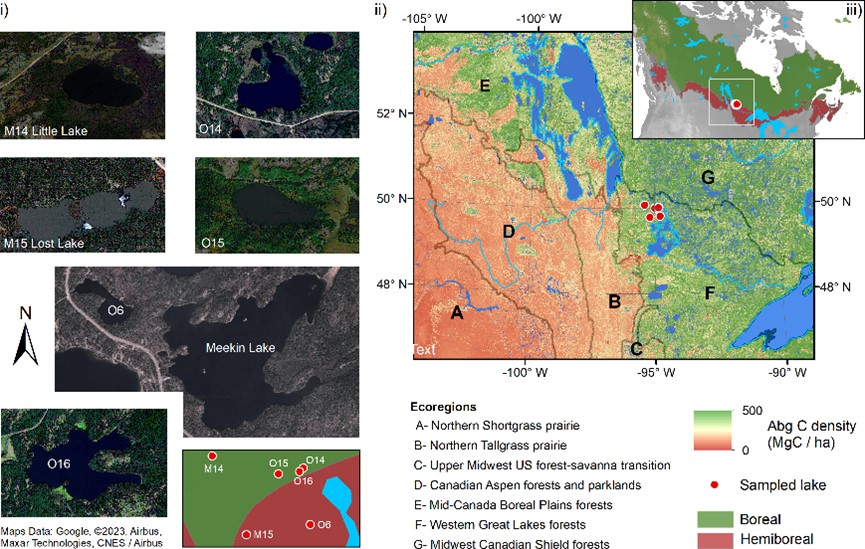
Looking at charcoal accumulation in lake sediments, we identify episodes of persistent elevated biomass burning over the past 12,000 years, with notable peaks occurring around 7,200, 5,750, 4,000, and 2,500-1,500 calibrated years before present (cal. yrs. BP; Figure 2). Moreover, the trajectory of mean regional fire return intervals indicates three distinct phases: fire return intervals gradually decreased during the early-Holocene, from 400 years at 11,000 cal. yrs. BP to below 200 years at 7,000 cal. yrs. BP, remained consistently below 180 years during the mid-Holocene, and increased to above 250 years in the late-Holocene.
Vegetation dynamics also underwent significant changes, transitioning from closed-type mixed boreal forests to oak-pine barren ecosystems and back to boreal types over millennia (Figure 2). These shifts were marked by fluctuations in the relative abundances of pollen genera, reflecting broader climatic and environmental changes. Specifically, a notable warming trend around 7,500 calibrated years before present intensified with a relatively steep slope (+0.11˚C per century) and persisted until approximately 7,000 cal. yrs. BP (Figure 2). This pivotal shift paralleled the increase of biomass burning and saw the boreal forest transition to an oak-pine barren ecosystem for about 2,000 years before reverting, as a gradual cooling trend took place, just before the warming witnessed in observational records.
One significant aspect of our work is its extension beyond environmental dynamics, as it explores the interplay between human populations, climate drivers, fire disturbances, and vegetation. Fluctuations over the past millennia showcased the interconnected relationship between climate, vegetation, wildfire dynamics, and humans (Figure 2). Population sizes tended to increase during periods with less frequent burning and decrease during periods of frequent burning.
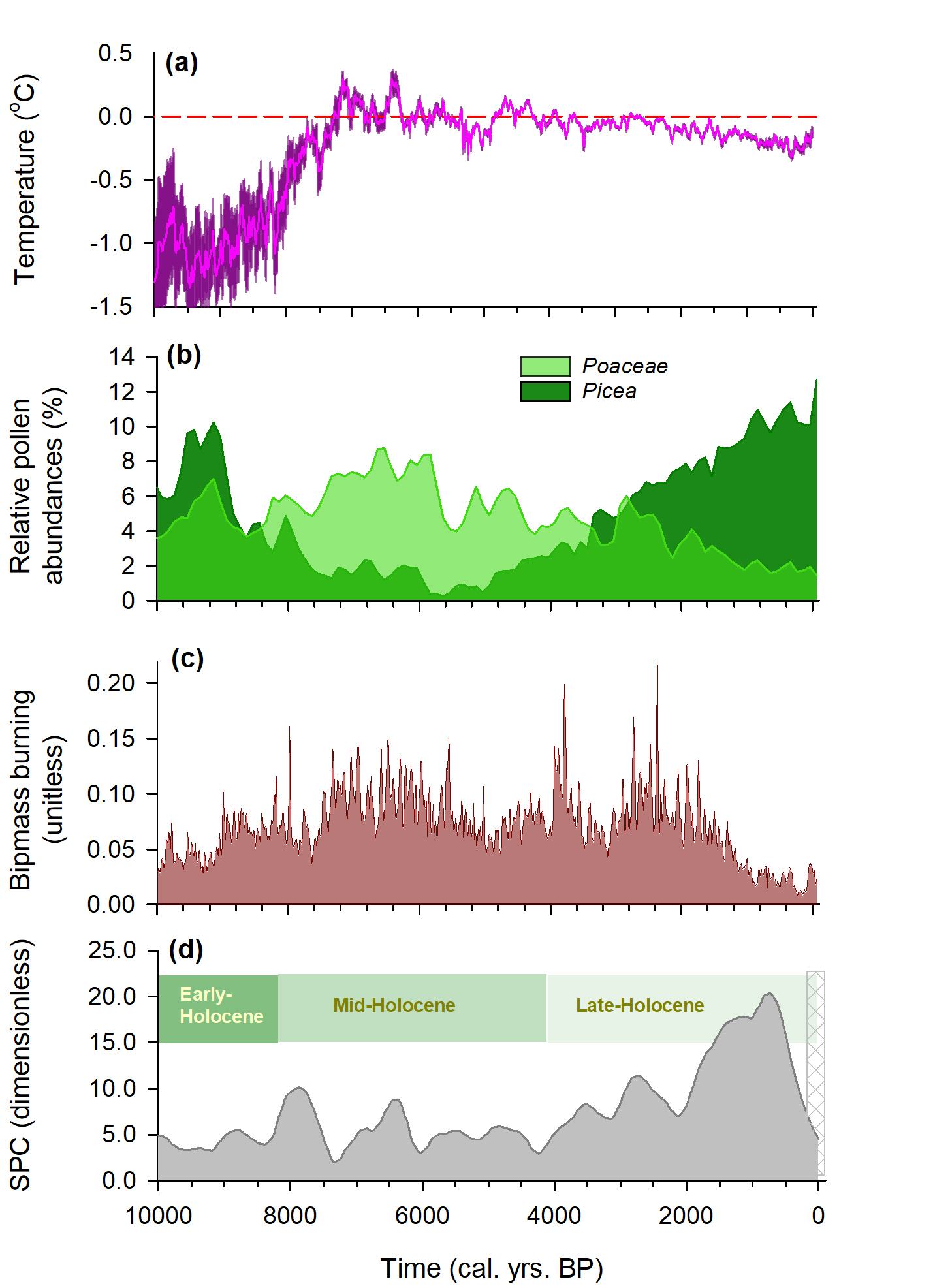
Comparing historical data, the highest rate of temperature change observed in the paleoclimate context was +0.11°C per century around 7,500 years before present. However, current projections suggest a much higher expected rate of change, ranging from +0.31 to +0.47°C per decade over the next fifty years. In response to climate change, there is an expectation that the prairie-forest ecotone may shift northeastward, accompanied by an increase in disturbances such as wildfires, potentially leading to a reduction in the extent of the boreal forest. Our results provide compelling evidence of such a warming-driven shift in vegetation approximately 7,000 years before present, characterized by a conversion from a boreal to an oak-pine barrens ecosystem. This environmental shift posed substantial challenges for the Indigenous societies inhabiting the prairie-forest ecotone at that time.
Paleoenvironmental data offer invaluable insights into historical wildfire patterns, vegetation dynamics, and human interactions with the environment. These insights not only inform our understanding of ecosystem responses but also guide adaptation and mitigation strategies in the face of rapid climate change. Our findings indicate that open-landscape mosaics, characterized by short-interval fire regimes, represent the natural state in a warmer climate context than present. In the long term, increasing aridity and a rise in wildfire disturbances anticipated with climate change will reduce the southern extent of the boreal forest, similar to changes experienced approximately 7,000 years before present. By leveraging historical knowledge, we can make informed decisions regarding fire management and ecological conservation.
Girardin, M.P., Gaboriau, D.M., Ali, A.A., Gajewski, K., Briere, M.D., Bergeron, Y., Paillard, J., Waito, J., Tardif, J.C. Boreal forest cover was reduced in the mid-Holocene with warming and recurring wildfires. Communications Earth & Environment 5, 176 (2024). https://doi.org/10.1038/s43247-024-01340-8.
Parallèles temporels dans les feux de forêt hémi-boréaux : une enquête historique sur la dynamique des écosystèmes
L'augmentation anticipée des perturbations causées par les incendies de forêt au Canada en raison des changements climatiques d'origine humaine réduira l'étendue de la forêt boréale du sud et entravera l'utilisation des terres, reflétant les transformations observées il y a environ 7 000 ans.
La forêt boréale circumpolaire, parmi les plus grands biomes de la Terre, englobe une zone écologique vitale connue sous le nom de région hémiboréale en Amérique du Nord. Cette zone de transition marque la limite sud des forêts boréales denses et abrite une gamme diversifiée de forêts mixtes, de savanes, de prairies et de zones humides.
Au Canada, la saison des incendies de 2023 a été exceptionnelle, avec environ 15 millions d'hectares brûlés. Ces incendies sans précédent, exacerbés par des températures records et une sécheresse généralisée, devraient entraîner la perte permanente de plus de 0,3 million d'hectares de forêts boréales dans la partie est du pays. L'incapacité de ces zones à se régénérer naturellement met en évidence l'urgence de comprendre les dynamiques historiques de l'écosystème. Alors que le pays se prépare à une autre saison d'incendies potentiellement sévère en 2024 suivant la dévastation de 2023, notre recherche plonge dans le contexte historique de ces forêts à travers les disciplines de la paléoécologie, de la paléoclimatologie et de l'archéologie. En examinant les conditions environnementales passées, notre équipe cherche à acquérir des connaissances sur la relation entre le changement climatique, la présence humaine et l'activité des incendies de forêt.
Dans notre étude récemment publiée dans la revue scientifique Communications Earth & Environment - Nature, nous établissons des parallèles entre les défis contemporains et les périodes historiques, telles que l'ère chaude du milieu de l'Holocène. À travers l'analyse d'échantillons de sédiments provenant de six lacs (Figure 1), nous reconstruisons une histoire détaillée de 12 000 ans de l'écotone prairie-forêt de la zone hémiboréale au Canada (Figure 2). Notre analyse des enregistrements de charbon de bois et de pollen offre des perspectives sur la fréquence, la taille et la gravité des incendies passés, ainsi que sur les changements dans la composition de la végétation.
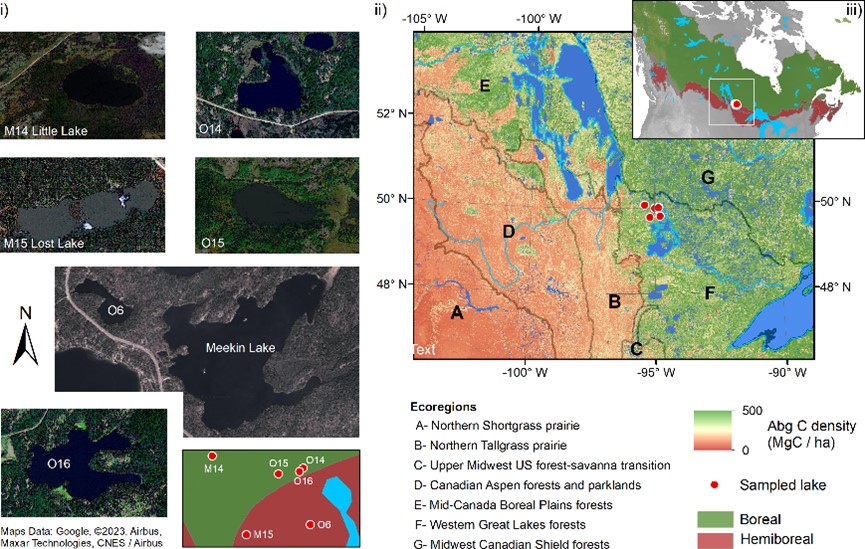
Figure 1. La zone d'étude, située dans la région du lac des Bois le long de la frontière entre les provinces du Manitoba et de l'Ontario au Canada, a été examinée en prélevant des sédiments dans six lacs (i). Les carottes ont été prélevées dans des colonnes d'eau atteignant des profondeurs de 1,2 m à 8,3 m. Les longueurs des carottes sédimentaires des six lacs échantillonnés étaient en moyenne de 614 cm, allant de 247 cm pour le lac M14 à 818 cm pour le lac O16. Les âges au fond des carottes ont atteint plus de 10 000 ans calibrés avant le présent (cal. années BP, c'est-à-dire CE 1950) pour les lacs M15, O6, O14 et O16. Les étendues des zones boréales et hémiboréales sont illustrées dans la carte en encart en haut à droite (iii). La palette de couleurs sur la grande carte (ii) montre la densité de carbone en surface en 2010, ainsi que les limites des écorégions.
En examinant l'accumulation de charbon de bois dans les sédiments lacustres, nous identifions des épisodes de combustion de biomasse élevée persistante au cours des 12 000 dernières années, avec des pics notables survenant vers 7 200, 5 750, 4 000 et 2 500-1 500 années calibrées avant le présent (années cal. BP ; Figure 2). De plus, la trajectoire des intervalles de retour des incendies régionaux moyens indique trois phases distinctes : les intervalles de retour des incendies ont progressivement diminué pendant l'Holocène inférieur, passant de 400 ans à 11 000 ans cal. BP à moins de 200 ans à 7 000 ans cal. BP, sont restés constamment inférieurs à 180 ans pendant l'Holocène moyen, et ont augmenté à plus de 250 ans à la fin de l'Holocène.
Les dynamiques de la végétation ont également subi des changements significatifs, passant de forêts boréales mixtes de type fermé à des écosystèmes de friches de chênes-pins et revenant à des types boréaux sur des millénaires (Figure 2). Ces changements ont été marqués par des fluctuations dans les abondances relatives des genres de pollen, reflétant des changements climatiques et environnementaux plus larges. En particulier, une tendance notable au réchauffement vers 7 500 ans calibrés avant le présent s'est intensifiée avec une pente relativement raide (+0,11˚C par siècle) et a persisté jusqu'à environ 7 000 ans cal. BP (Figure 2). Ce changement crucial a été parallèle à l'augmentation de la combustion de la biomasse et a vu la forêt boréale passer à un écosystème de friches de chênes-pins pendant environ 2 000 ans avant de revenir, alors qu'une tendance au refroidissement progressif se produisait, juste avant le réchauffement observé dans les relevés.
Un aspect significatif de notre travail est son extension au-delà des dynamiques environnementales, car il explore l'interaction entre les populations humaines, les moteurs climatiques, les perturbations dues aux incendies et la végétation. Les fluctuations au cours des derniers millénaires ont montré la relation interconnectée entre le climat, la végétation, les dynamiques des incendies de forêt et les humains (Figure 2). Les tailles de population avaient tendance à augmenter pendant les périodes de brûlages moins fréquents et à diminuer pendant les périodes de brûlages fréquents.
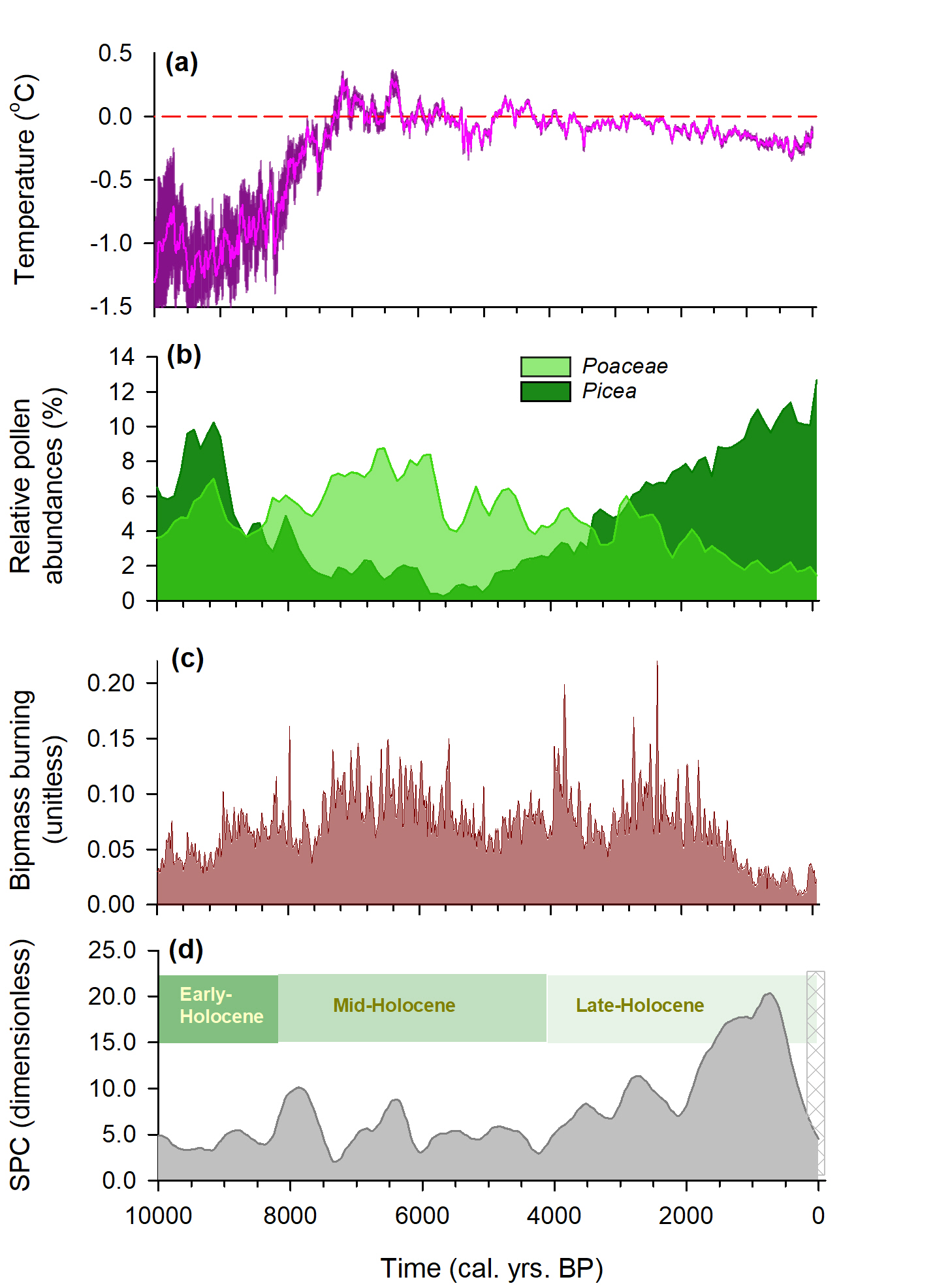
Figure 2. Relations entre la température, la végétation, les incendies et les niveaux de population humaine. (a) Températures annuelles moyennes régionales reconstituées au cours des 10 000 dernières années. Les anomalies sont indiquées par rapport à la moyenne de 3 000 à 5 000 ans cal. BP. (b) Moyennes régionales de la combustion de biomasse et (c) abondances relatives du pollen (%) pour les taxons Poaceae et Picea. (d) Distribution de probabilité cumulée pour la taille relative de la population humaine déduite des données archéologiques. Notre analyse est tronquée pendant la période européenne en raison des difficultés à estimer les tendances démographiques post-européennes à l'aide de cette méthode. Les sous-époques de l'holocène (début, milieu et fin de l'holocène) sont délimitées.
En comparant les données historiques, le taux le plus élevé de changement de température observé dans le contexte paléoclimatique était de +0,11°C par siècle vers 7 500 ans avant le présent. Cependant, les projections actuelles suggèrent un taux de changement attendu beaucoup plus élevé, allant de +0,31 à +0,47°C par décennie au cours des cinquante prochaines années. En réponse au changement climatique, on s'attend à ce que l'écotone prairie-forêt se déplace vers le nord-est, accompagné d'une augmentation des perturbations telles que les incendies de forêt, ce qui pourrait entraîner une réduction de l'étendue de la forêt boréale. Nos résultats fournissent des preuves convaincantes d'un tel changement de végétation induit par le réchauffement, environ 7 000 ans avant le présent, caractérisé par une conversion d'une forêt boréale en un écosystème de friches de chênes-pins. Ce changement environnemental a posé d'importants défis aux sociétés autochtones habitant l'écotone prairie-forêt à cette époque.
Les données paléoenvironnementales offrent des aperçus inestimables de l’historiques des incendies de forêt, des dynamiques de la végétation et des interactions humaines avec l'environnement. Ces connaissances éclairent non seulement notre compréhension des réponses des écosystèmes, mais aussi guident les stratégies d'adaptation et d'atténuation face au changement climatique en cours. Nos résultats indiquent que les mosaïques de paysages ouverts, caractérisées par des régimes d'incendie à intervalles courts, représentent l'état naturel dans un contexte climatique plus chaud qu'actuellement. À long terme, l'augmentation de l'aridité et la montée des perturbations dues aux incendies de forêt prévues avec le changement climatique réduiront l'étendue méridionale de la forêt boréale, de manière similaire aux changements vécus il y a environ 7 000 ans. En tirant parti des connaissances historiques, nous pouvons prendre des décisions éclairées concernant la gestion des incendies et la conservation écologique.
Girardin, M.P., Gaboriau, D.M., Ali, A.A., Gajewski, K., Briere, M.D., Bergeron, Y., Paillard, J., Waito, J., Tardif, J.C. Boreal forest cover was reduced in the mid-Holocene with warming and recurring wildfires. Communications Earth & Environment 5, 176 (2024). https://doi.org/10.1038/s43247-024-01340-8.
Follow the Topic
-
Communications Earth & Environment

An open access journal from Nature Portfolio that publishes high-quality research, reviews and commentary in the Earth, environmental and planetary sciences.
Related Collections
With Collections, you can get published faster and increase your visibility.
Geology of the Moon
Publishing Model: Hybrid
Deadline: Jan 31, 2026
Drought
Publishing Model: Hybrid
Deadline: Dec 31, 2025


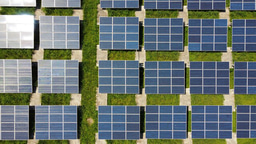

Please sign in or register for FREE
If you are a registered user on Research Communities by Springer Nature, please sign in